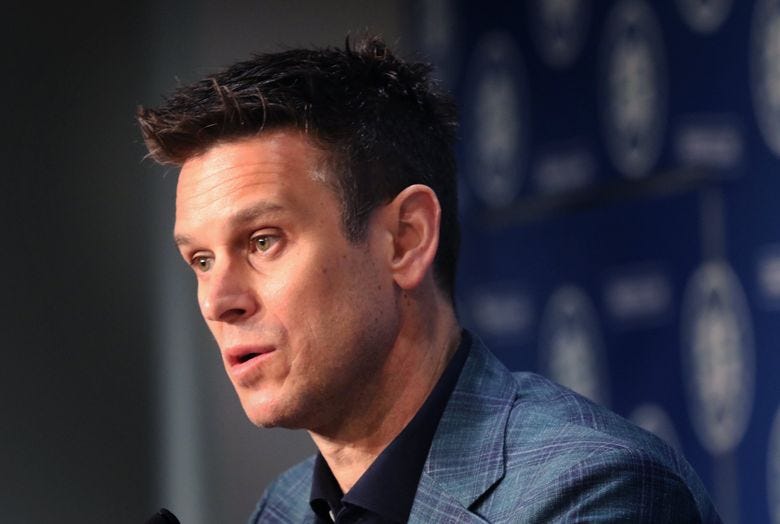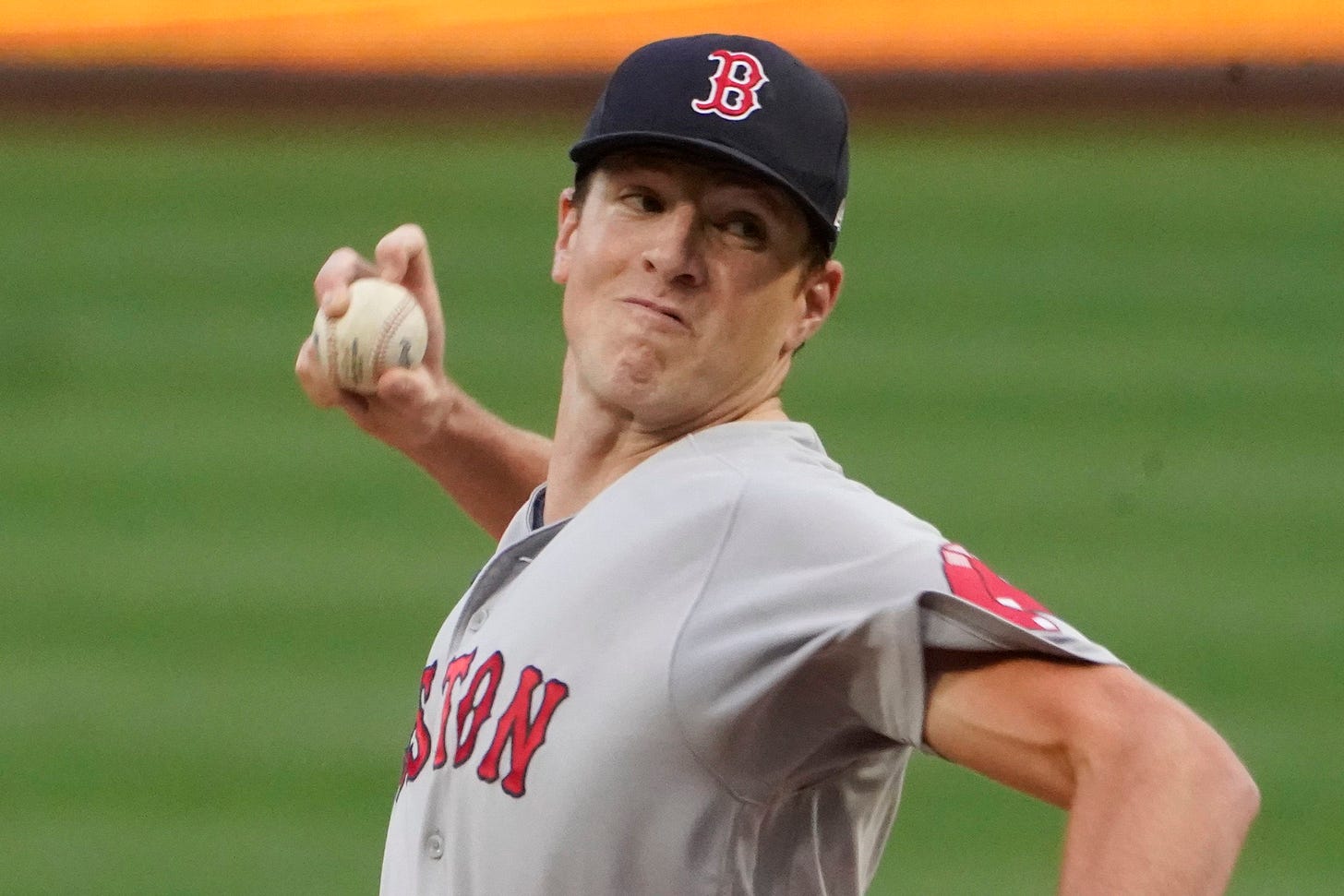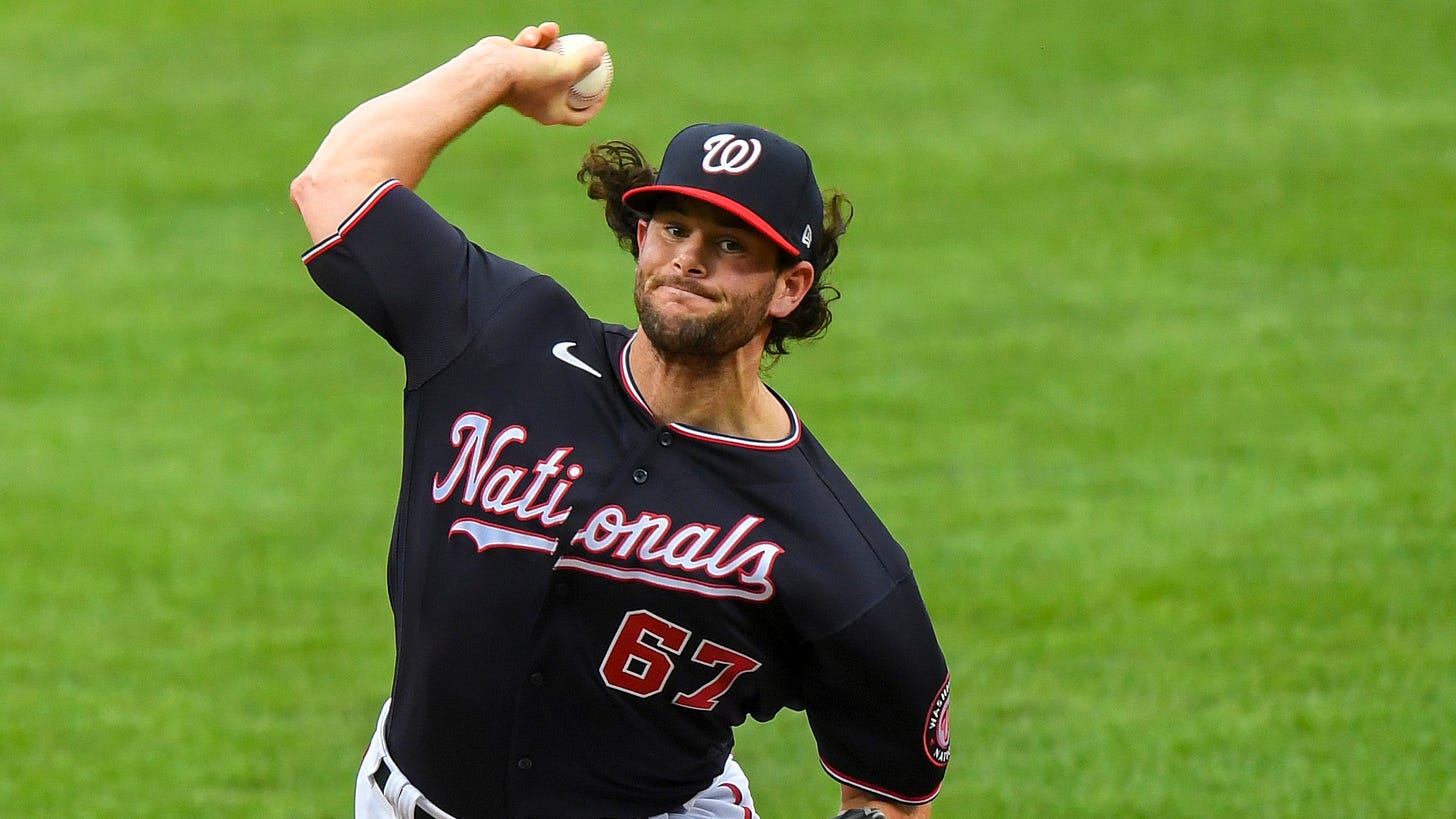Ranking the remaining free agents for the Mariners, plus some trade ideas
The Mariners clearly don't WANT to be done adding to the club. What could be next?
There are a few ways to look at the 2023 outlook for the Seattle Mariners as we near the start of spring training. Among them, these two:
1. The team didn’t do enough to put a large enough dent in the Astros’ grip on the division
2. The club improved upon a 90-win roster and carries 95-plus win upside into the 2023 season
While there are a handful of other reasomable ways to view the winter the Mariners have produced thus far, both of the above are probably true.
The organization’s PoBOps (not gonna stop) Jerry Dipoto told 710 ESPN Thursday the club remains engaged with free agents, even after the signing of veteran OF AJ Pollock, and continue to talk to ribal front offices regarding trades, specifically noting there is room for one more hitter.
If we take this statement at face value, it suggests the Mariners prefer offense over pitching right now (makes sense), though Dipoto has never been one to rule out anything if it makes the team better. I bring this up because the three most glaring spots on the roster that can be upgraded are, in some order, one of the spots in the everyday lineup (OF/DH), the No. 5 starter in the rotation — where right-hander Chris Flexen and lefty Marco Gonzales project to be rather ordinary, despite both pitchers having posted seasons the club would sign up for immediately if given the choice — and the back of the bullpen.
Latest Episode of Baseball Things: Pollock’s place in the lineup, Taylor Dollard and more
Rather than arguing the phlosophy in terms of how to prioritize offense versus pitching, let’s instead rank the remaining free agents in terms of fit for the Mariners, considering likely cost and reasonable 2023 projections.
NOTE: Since this was written, the club has acquired a corner infielder, making corner infield-restricted names listed below pretty moot. Names such as Harold Castro and Mike Moustakas no longer carry logic for the Mariners’ roster.
Tier 1 Fits
LHR Andrew Chafin
RHS Michael Wacha
LHR Brad Hand
IF Edwin Rios
LHR Matt Moore
RHR Trevor Rosenthal
Tier 2 Fits
1B/3B Harold Castro
UT Marwin Gonzalez
RHR Michael Fulmer
LHR Will Smith
OF Adam Duvall
OF Jurickson Profar
Tier 3 Fits
1B/3B Mike Moustakas
RHR Corey Knebel
1B/3B Johan Camargo
OF Chad Pinder
1B/OF Trey Mancini
Of Brian Anderson
For me, the arms make a lot more sense as a whole, though I like the idea of Edwin Rios as a bench bat and secondary option at the infield corners, and Harold Castro could be a useful and inexpensive complement in a similar fashion, despite being quite limited defensively at third base and lacking power. Camargo is a better glove with less reliability at the plate, but for a pure bench option he fits.
Duvall made more sense pre-Pollock, as did Pinder, Profar, Anderson, and Mancini, but Gonzalez’s ability to play passable or better defense at all four infield spots plus left field make him interesting if the team believes they have a fix for his offensive fade over the last few years (wRC+: 57, 65).
If the club us going to add more of an everyday player, it’s more likely to come via trade than free agency. More on that in two minutes.
The club’s bullpen might be set with righties Trevor Gott and Chris Clarke serving as the two main additions to a group that faded a bit late last season, and traded one of its most effective arms to Toronto in the Teoscar Hernandez deal. It appears the front office has a lot of confidence in someone stepping up, whether it be Gott, Clarke, Matthew Festa, Penn Murfee, or prospects, including Prelander Berroa, Bryan Woo, Bryce Miller, or Emerson Hancock, among others. But there are proven arms available on the market, led by Chafin.
Chafin has had one bad year in his entire career — impressive for a reliever — and it was the shortened season of 2020 when the start-stop-start approach to the season impacted a lot of players, especially relievers and young hitters. But the southpaw may warrant two or three years at somewhere north of $9 million per season. It’d be a major surprise if the Mariners engaged.
Hand or Moore also make a lot of sense, adding a left-handed reliever to a fully right-handed group.
Wacha is the lone starter listed above, and while there are a lot of reasons to bet on him to outperform the Mariners’ veteran options, the cost-reward ratio probably doesn’t make tons of sense, unless they feel ultimately confident they’ll be able to move Flexen and nearly all of the $8 million he’s owed, or about half of Gonzales’s remaining guarantees ($18.5 million). The going rate for starters of Wacha’s pedigree is $11-13 million for one year and $18-25 million for two, based on this year’s market.
Again, a trade appears to be the best route for the Mariners to acquire an upgrade in the rotation.
Potential Starting Pitcher Trade Targets
Nick Pivetta, RHP — Boston
Mitch Keller, RHP — Pittsburgh
JT Brubaker, RHP — Pittsburgh
Freddy Peralta, RHP — Milwaukee
Eric Lauer, LHP — Milwaukee
Trevor Rogers, LHP — Miami
Aaron Ashby, RHP — Milwaukee
I don’t see Lopez or any of the Marlins’ top prospects a sensible target for the Mariners, and even Peralta, Lauer, Ashby, and Rogers seem like mid-season or future discussions more than winter ones, and in some cases for both clubs, not just Seattle. Pivetta, Keller, and Brubaker, however, make some sense based on what I believe the trade cost would be for each.
Potential Relief Pitcher Trade Targets
David Bednar, RHP — Pittsburgh
Duane Underwood Jr., RHP — Pittsburgh
Hunter Harvey, RHP — Washington
Scott Barlow, RHP — Kansas City
Alex Lange, RHP — Detroit
Kyle Finnegan, RHP — Washington
Ryan Brasier, RHP — Boston
Bednar is the hot name after the season he just had, but Finnegan and Harvey may be the most availanle, considering the Washington Nationals appear nowhere near contention. Both arms have three years of control remaining, miss bats and throw strikes.
Potential Hitter Trade Targets
Bryan Reynolds, OF — Pittsburgh
Luis Urias, UT — Milwaukee
Brandon Lowe, 2B/3B — Tampa Bay
Reynolds is a long shot but it’s on the table, Urias remains a key fit for the Brewers but in no manner is untouchable. Lowe is coming off an injury-plagued season but is signed through 2026 and is just 28 years old and is a year removed from hitting 39 homers. He can play second (and third, though he has little experience at the hot corner to date), and the chance he functions as an everyday bat are pretty good.
Once the season is a few months old we’ll be able to add names to this list, but there don’t appear to be a lot of everyday bats on the trade market.
Dipoto hints the club doesn’t want to be done adding to the roster, but it’s not going to be easy to add impact of any kind. But this is not a front office shy on creativity, and they have shown a willigness to trade from the farm to add multiple years of proven talent.
Stay tuned.





Does Justin Topa figure into the bullpen now, or is that a down the road thing